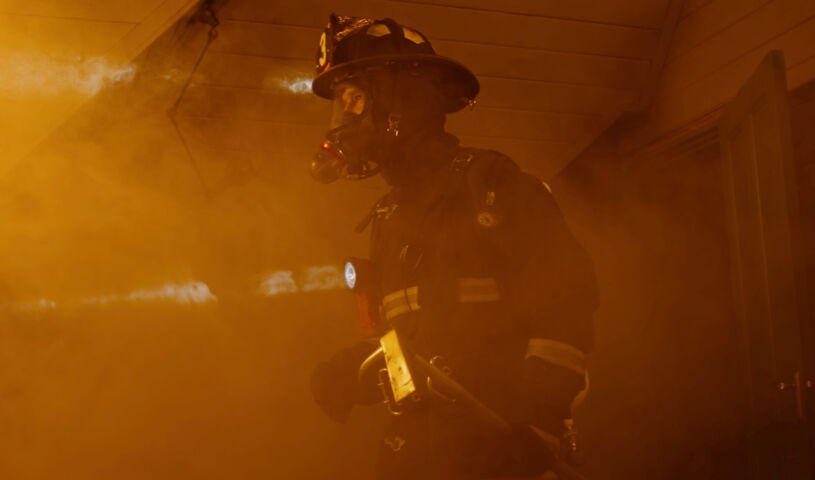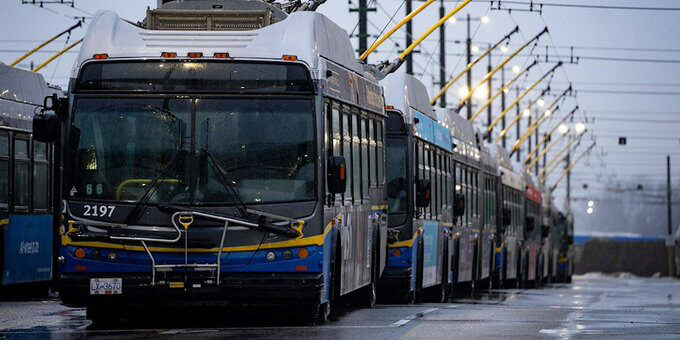Canada’s fire departments facing growing pressures
 While fire services across the country are working to keep wildfires in check, they are also struggling to deal with growing pressures on the job. Photo: Adobe Stock
While fire services across the country are working to keep wildfires in check, they are also struggling to deal with growing pressures on the job. Photo: Adobe Stock
Canada is currently in the middle of wildfire season. However, while fire services across the country are working to keep wildfires in check, they are also struggling to deal with growing pressures on the job. That’s the message from Tina Saryeddine, executive director of the Canadian Association of Fire Chiefs (CAFC).
Saryeddine spoke at a plenary session on fires and floods during this year’s Federation of Canadian Municipalities’ conference in Calgary. She told delegates that fire services are facing a “confluence of obstacles,” from struggles recruiting personnel to aging equipment.
Confluence of Obstacles
CAFC is an organization that has represented Canada’s fire chiefs since 1909. There are 3,200 fire departments across Canada, and Saryeddine said that despite the name, they do much more than fight fires.
In communities of all sizes, fire department handle emergency management and are often first responders to all kinds of emergencies, not just fires. This responsibility places a lot of pressure on departments that often have limited resources.
“What people don’t always fully appreciate is that fire chiefs heading fire departments are often given the role of designated emergency management coordinator,” Saryeddine said. “So, when we talk about fire departments, it can often be a misnomer because fire is only part of the mandate.”
According to the 2023 Great Canadian Fire Census, departments responded to around two million. However, the census report notes that the data was collected before the 2023 summer wildfire season. The report states that, for the 12-month period ending April 2023, only 10 per cent of those calls were fire suppression related.
Around half the calls were due to emergency medical response. Thirty per cent were due to all-hazard response from vehicle extrication to high angle, water rescue, and dangerous goods. Ten per cent were due to atypical climate emergencies.
The census was conducted by CAFC in partnership with the Answer the Call committee, the Data committee, and the National Advisory Council, and highlights the pressure fire departments are under.
“The census results show the extraordinary productivity of the sector. However, they also detail the stark realities facing Canada’s 3,200 fire departments,” the report states. “This includes diminishing numbers of volunteer firefighters, increased emergency call volumes, mounting training and equipment costs, aging of gear and equipment, and the reclassification of firefighting into the top tier of carcinogenic professions.”
Recruitment Challenges
Saryeddine highlighted that recruiting and retaining personnel is one of the biggest challenges facing departments.
“There is a shrinking pool of individuals willing to do this type of work,” she said. “And within that pool of individuals, the group is aging.”
The census estimated there are around 125,000 firefighters in Canada. It found that around 12 per cent of positions are vacant while the number of firefighters over 50 is increasing. In 2022, around 25 per cent of firefighters were over 50, in 2023 that number was 30 per cent.
The data also highlights how reliant many fire services – particularly in rural and remote areas – are reliant on volunteers. Just over 70 per cent of firefighters are volunteers, compared with just 29 per cent who are career firefighters.
Dealing with the stress and mental health impacts of the job is also a growing concern, especially among volunteer and rural firefighters who face a complex workload. The census also indicated that firefighters in 22 per cent of departments experienced violence or harassment while responding to an emergency.
“The workload is heavier, the call volume is higher, and the calls are more complex,” Saryeddine said. “So, you have concerns about mental health and concerns about work-life balance. Mental health programming, programs that mitigate risks, good training – all of these things make for a stronger system.”
Aging Equipment
It is not just personnel that departments are worried about, it’s also the condition of their equipment. CAFC says departments are having to use equipment well beyond the typical lifespan. Strained and limited budgets mean departments are having to extend the lifecycle of equipment and defer buying newer equipment.
According to the census, more than 50 per cent of departments have deferred buying new equipment in 2023. It estimates that Canada needed some 1,381 more fire trucks in 2023, a significant jump from the 800 that were needed in 2022. Over 60 per cent of departments are using pumper trucks older than 15 years, while around one-third are using tanker trucks older than 20 years.
“Fire sector equipment isn’t cheap, but the longer it deteriorates, the more difficult it is to replace,” said Paul Boissonneault, fire chief of Oakville, Ont. and co-chair of CAFC’s leadership committee. “Leadership is required to align all levels of government in addressing an issue that is as urgent as affordable housing and climate adaptation.”
CAFC is asking the federal government to reinstate funding for the Joint Emergency Preparedness Program to help fire departments cover the cost of new equipment. The federal government scrapped funding for the program in 2013.
National Fire Administration
Saryeddine explained that another obstacle fire departments face is a lack of coordination between emergency services and between different orders of government. That means there sometimes isn’t coordination in responding to emergences, but also when it comes to policy making.
In 2021, CAFC released its strategic plan for the five years from 2021 to 2025. A key component of that plan is a call for the federal government to create a national fire administration in Canada. The association has long called for establishing such an advisory which it says would help coordinate emergency preparedness and response across Canada.
“Establishing a National Fire Administration will be one of the most consequential policy instruments in the history of fire and emergency management in Canada,” said Keri Martens, deputy fire chief of Banff, Alta. and CAFC vice president and. “It will allow Canada to recognize, address and coordinate, on a regular, systematic, and national basis, all fire and emergency management issues.”
Other countries like Australia, Japan, New Zealand, the United Kingdom, and the United States have some kind of national fire administration. Canada, however, does not.
CAFC sees the administration as a way to address policy blind spots at the national level. It says it would operate in a similar way to the Federal Emergency Management Agency (FEMA) in the U.S. and other national-level emergency response agencies around the world.
“The pressures on fire departments are ever increasing,” Saryeddine said. “This is why a national fire administration would be a proactive move. More housing, more green technologies – these are very worthy goals, but those goals have implications for fire and emergency which are often in the blind spot of policy makers. So, what we’re saying is those considerations need to be at the table to ensure public safety.” MW
✯ Municipal World Executive and Essentials Plus Members: You might also be interested in Deryn Rizzi’s article: Positive power of fire – Strengthening relationships with Indigenous communities.
Ibrahim Daair is staff writer at Municipal World.
Related resource materials:



